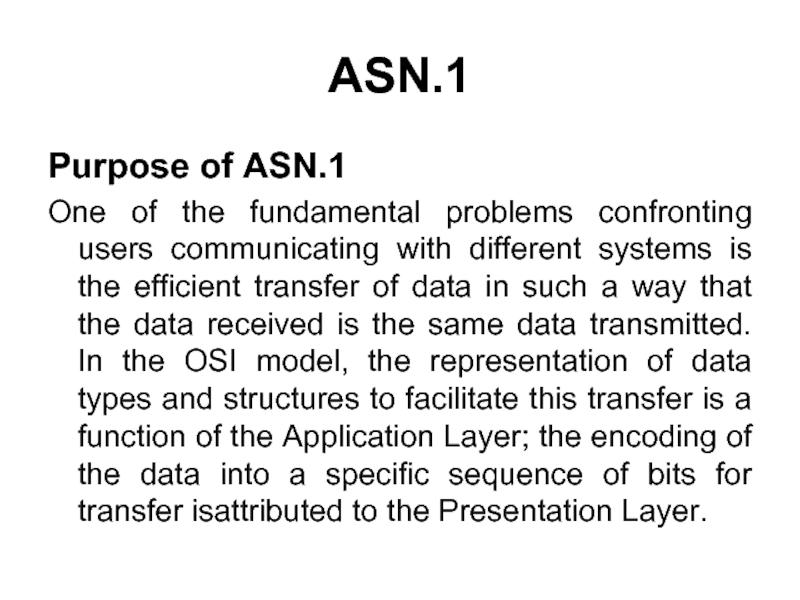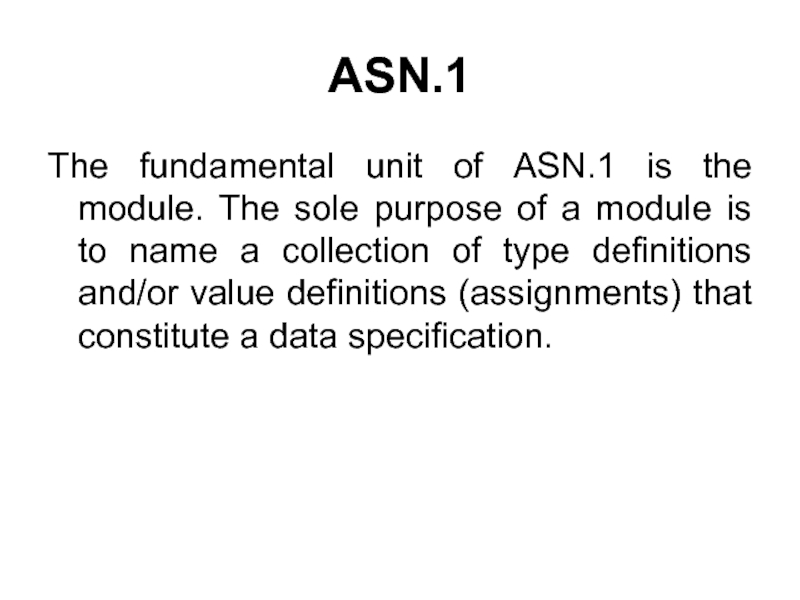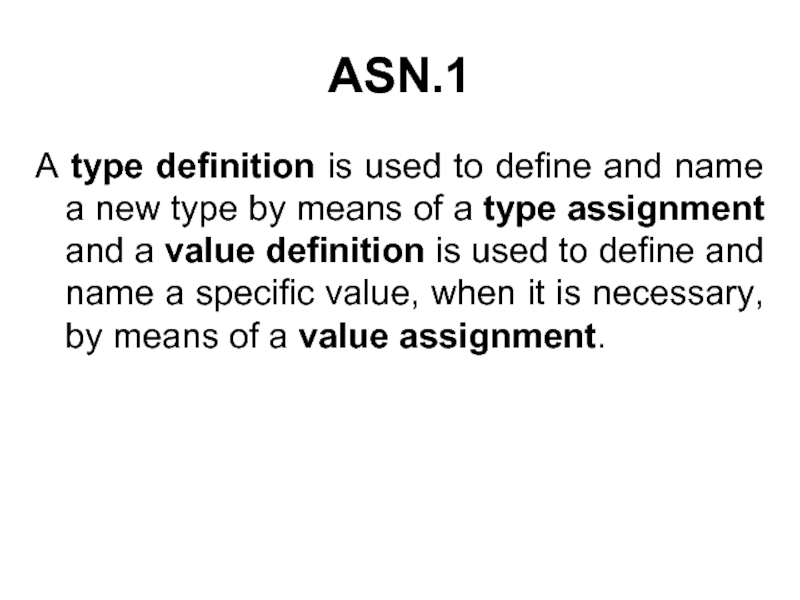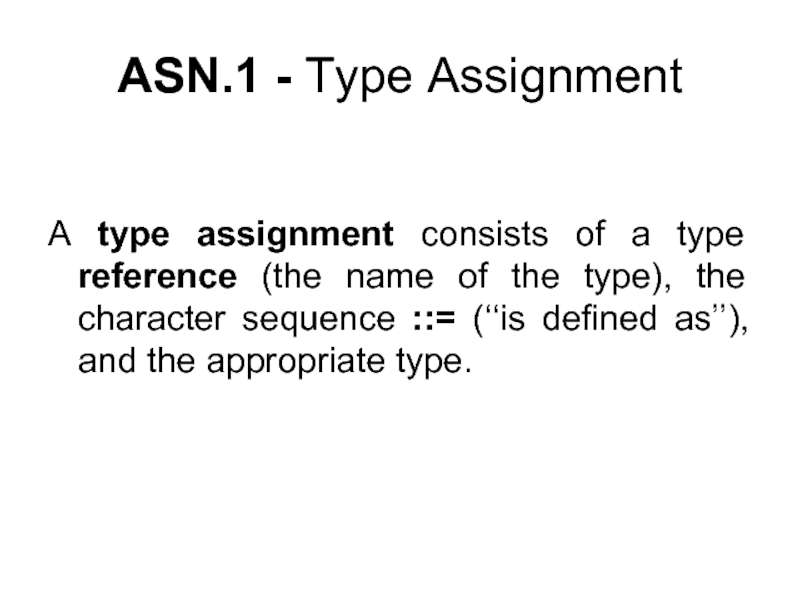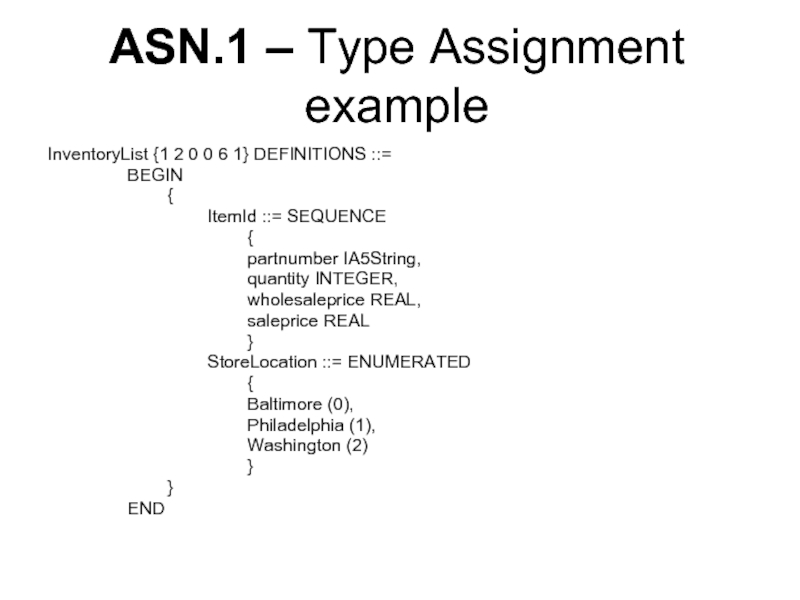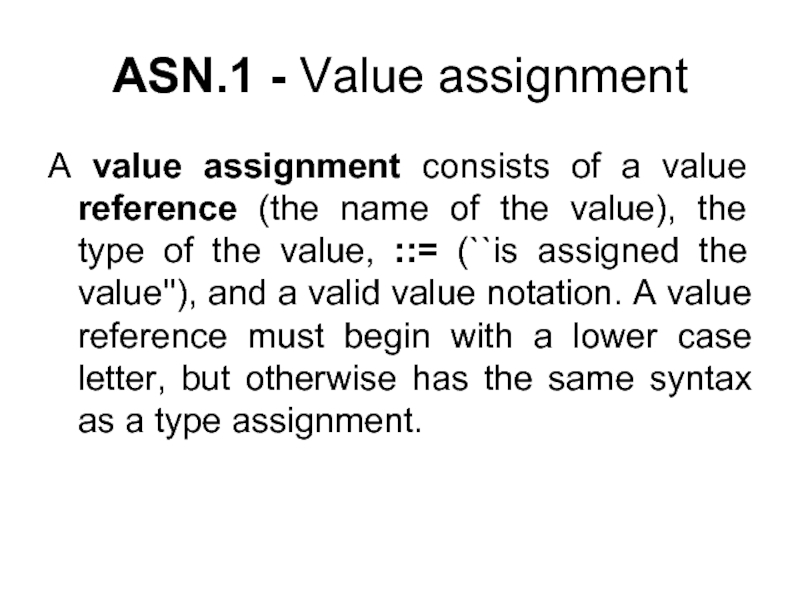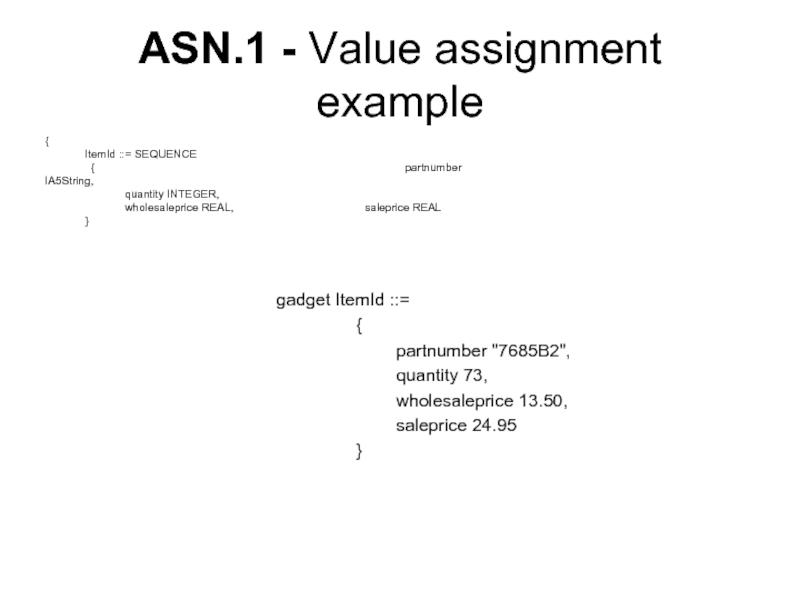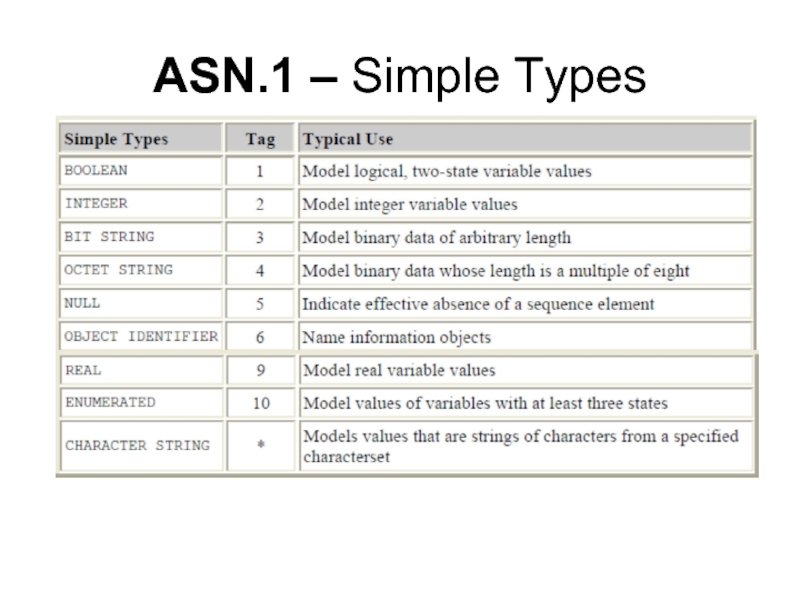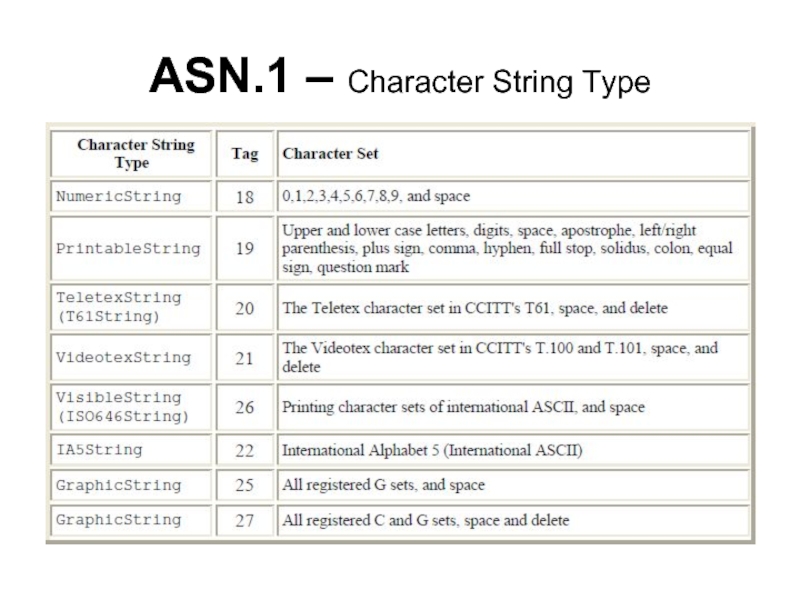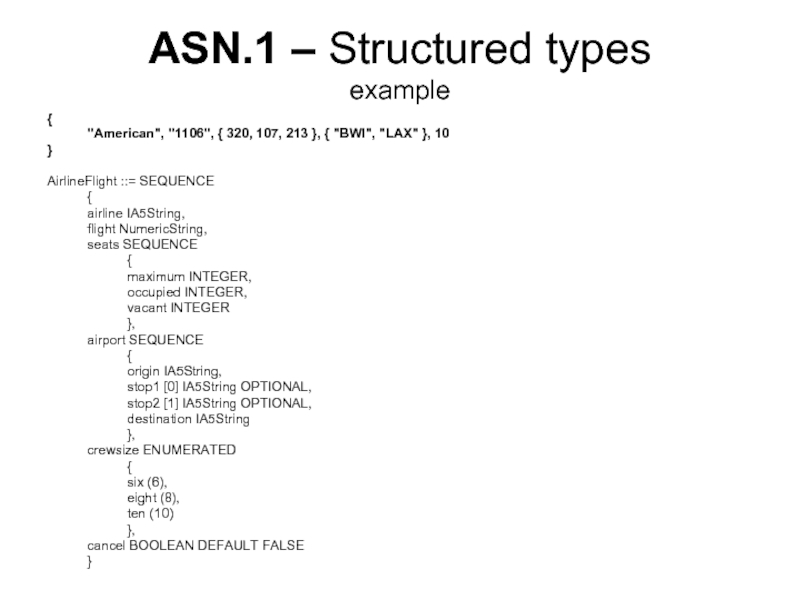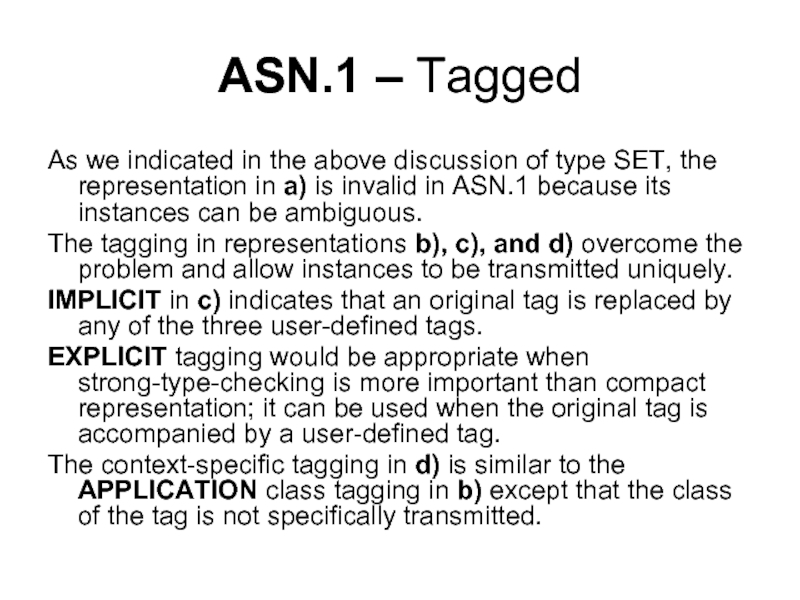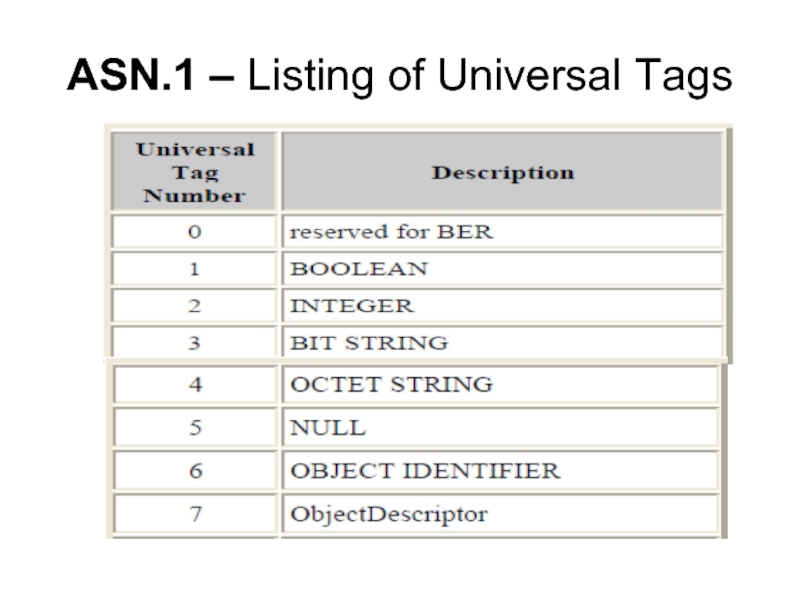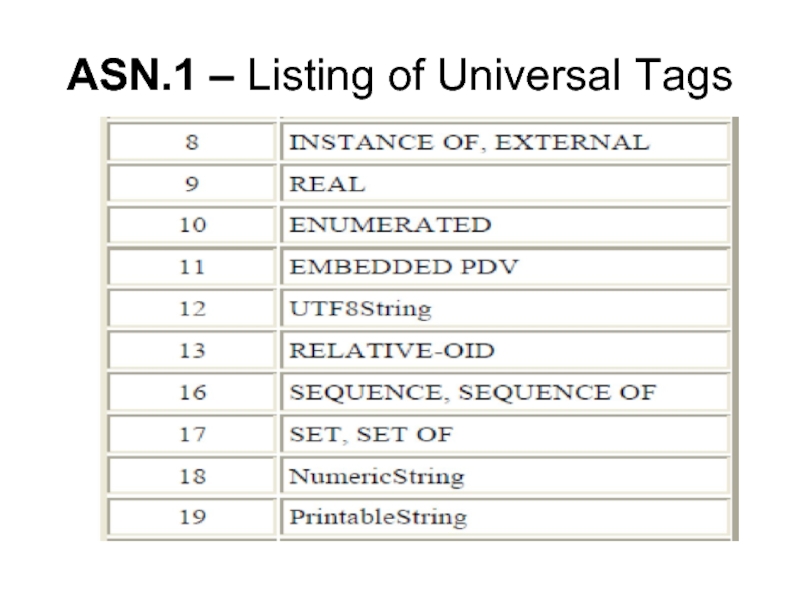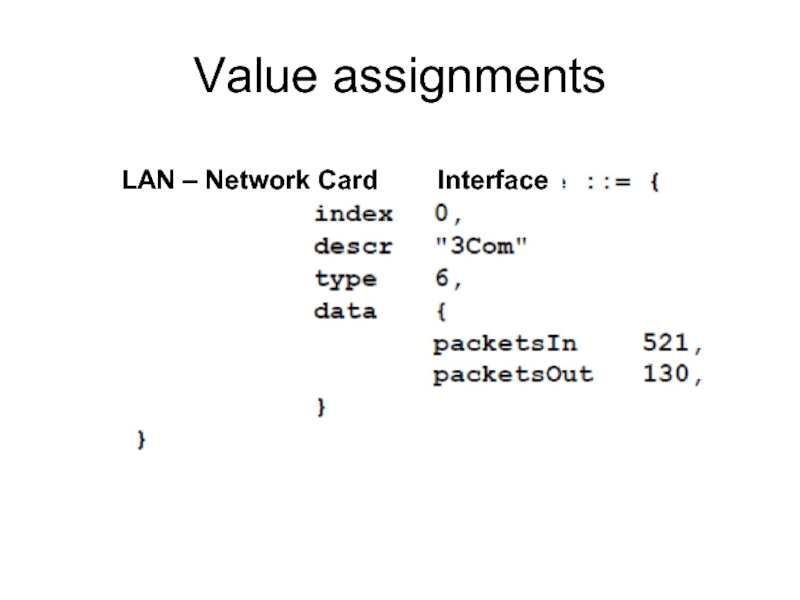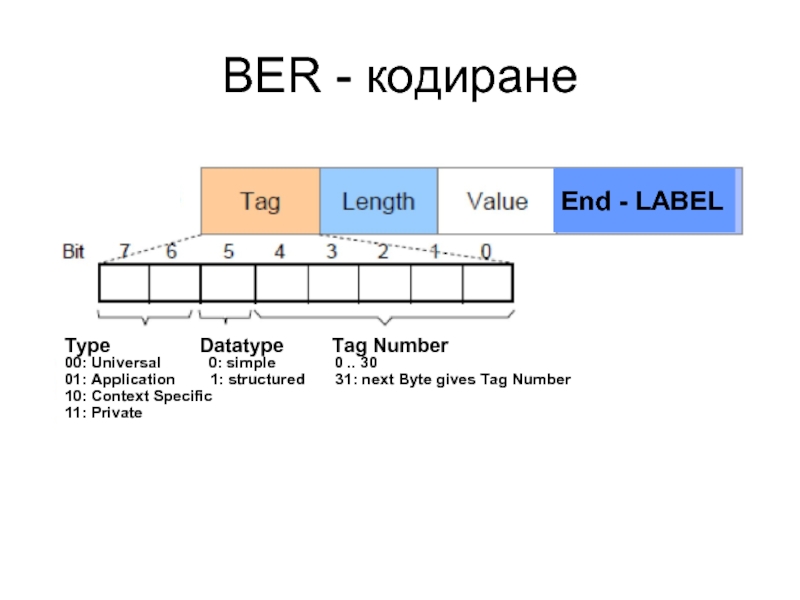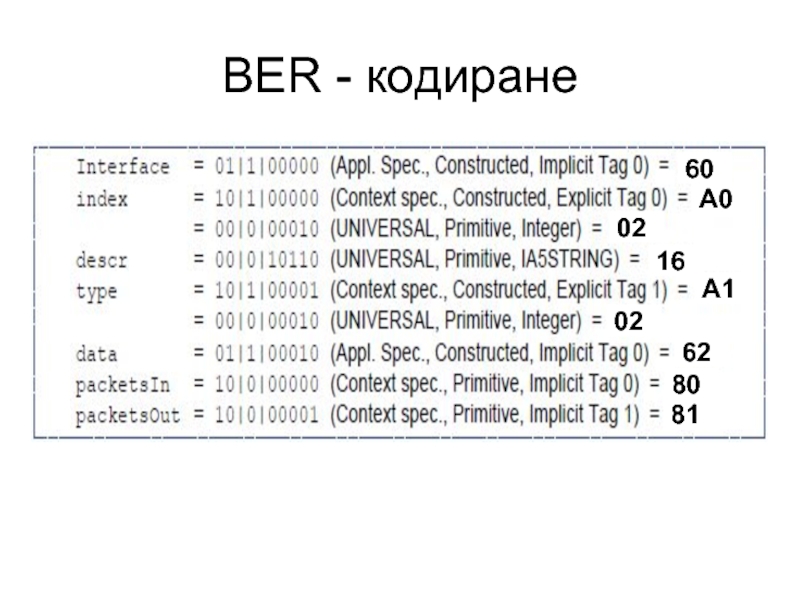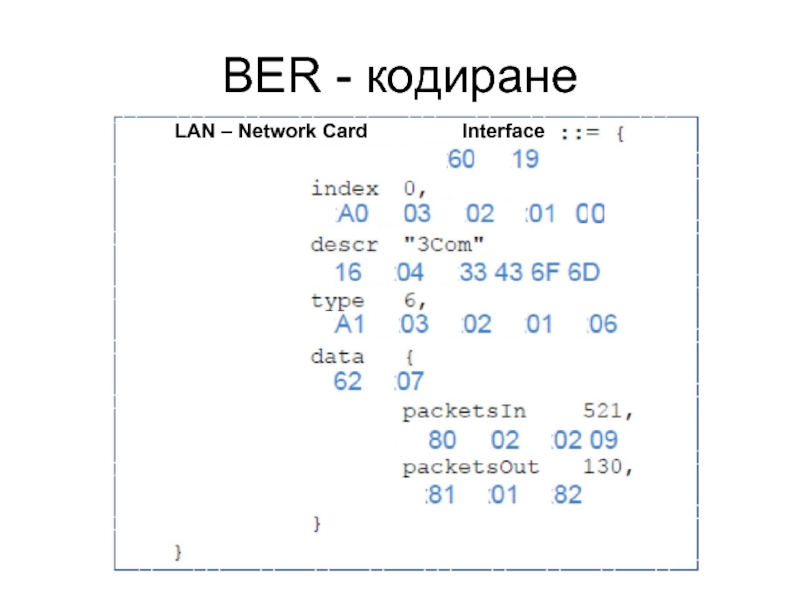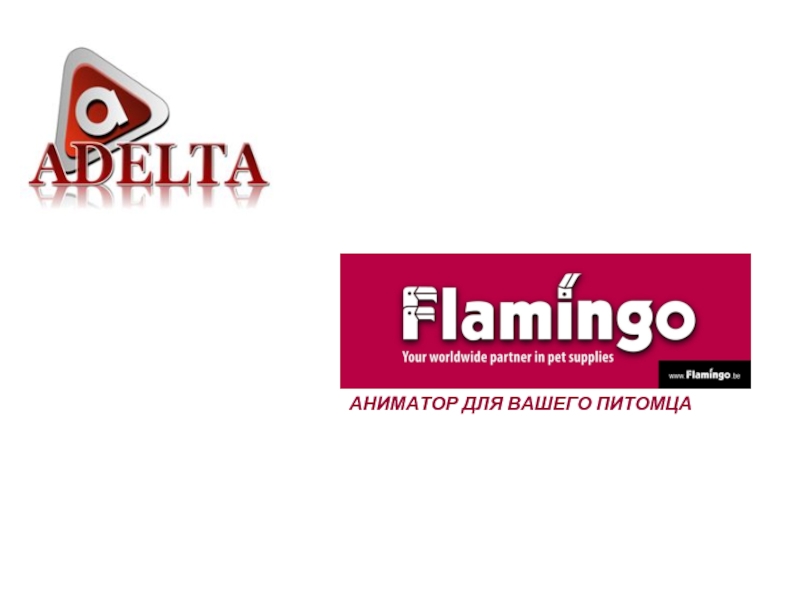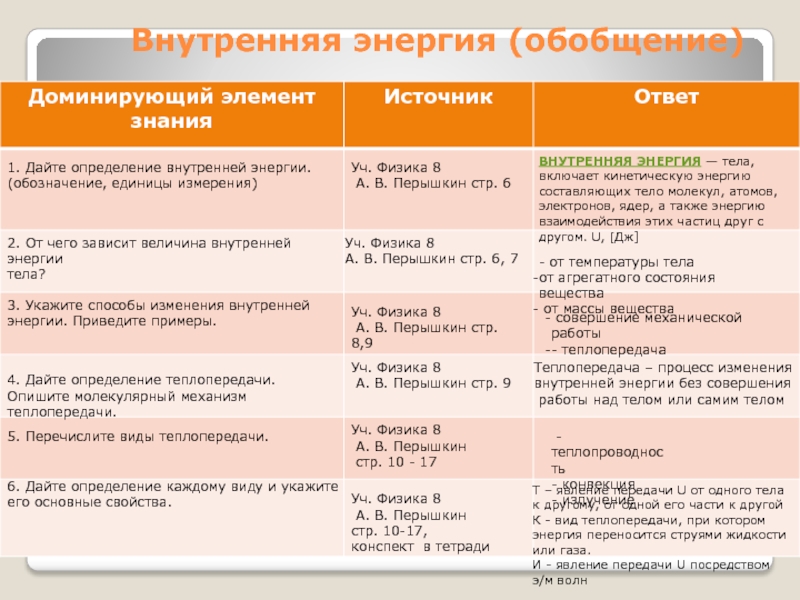- Главная
- Разное
- Дизайн
- Бизнес и предпринимательство
- Аналитика
- Образование
- Развлечения
- Красота и здоровье
- Финансы
- Государство
- Путешествия
- Спорт
- Недвижимость
- Армия
- Графика
- Культурология
- Еда и кулинария
- Лингвистика
- Английский язык
- Астрономия
- Алгебра
- Биология
- География
- Детские презентации
- Информатика
- История
- Литература
- Маркетинг
- Математика
- Медицина
- Менеджмент
- Музыка
- МХК
- Немецкий язык
- ОБЖ
- Обществознание
- Окружающий мир
- Педагогика
- Русский язык
- Технология
- Физика
- Философия
- Химия
- Шаблоны, картинки для презентаций
- Экология
- Экономика
- Юриспруденция
ASN презентация
Содержание
- 1. ASN
- 2. ASN.1 Purpose of ASN.1 One of the
- 3. The fundamental unit of ASN.1 is the
- 4. A type definition is used to define
- 5. A type assignment consists of a type
- 6. InventoryList {1 2 0 0 6 1}
- 7. A value assignment consists of a value
- 8. gadget ItemId ::= { partnumber "7685B2", quantity
- 9. ASN.1 – Simple Types
- 10. ASN.1 – Character String Type
- 11. ASN.1 – Structured types
- 12. { "American", "1106", { 320, 107, 213
- 13. Type TAGGED is used to enable the
- 14. The user-defined tag consists of a class
- 15. ASN.1 – Tagged
- 16. As we indicated in the above discussion
- 17. ASN.1 – Listing of Universal Tags
- 18. ASN.1 – Listing of Universal Tags
- 19. ASN.1 – Listing of Universal Tags
- 20. Abstract Syntax und Transfer Syntax
- 21. Задача Дефиниране на типове данни за следния
- 22. Type assignments
- 23. Value assignments LAN – Network Card Interface
- 24. BER - кодиране End - LABEL
- 25. BER - кодиране 81 80 62 02 A1 16 02 A0 60
- 26. BER - кодиране
- 27. BER - кодиране
Слайд 2ASN.1
Purpose of ASN.1
One of the fundamental problems confronting users communicating with
Слайд 3The fundamental unit of ASN.1 is the module. The sole purpose
ASN.1
Слайд 4A type definition is used to define and name a new
ASN.1
Слайд 5A type assignment consists of a type reference (the name of
ASN.1 - Type Assignment
Слайд 6InventoryList {1 2 0 0 6 1} DEFINITIONS ::=
BEGIN
{
ItemId ::= SEQUENCE
{
partnumber
quantity INTEGER,
wholesaleprice REAL,
saleprice REAL
}
StoreLocation ::= ENUMERATED
{
Baltimore (0),
Philadelphia (1),
Washington (2)
}
}
END
ASN.1 – Type Assignment
example
Слайд 7A value assignment consists of a value reference (the name of
ASN.1 - Value assignment
Слайд 8gadget ItemId ::=
{
partnumber "7685B2",
quantity 73,
wholesaleprice 13.50,
saleprice 24.95
}
ASN.1 - Value assignment
example
{
ItemId ::=
{ partnumber IA5String,
quantity INTEGER,
wholesaleprice REAL, saleprice REAL
}
Слайд 12{
"American", "1106", { 320, 107, 213 }, { "BWI", "LAX" },
}
AirlineFlight ::= SEQUENCE
{
airline IA5String,
flight NumericString,
seats SEQUENCE
{
maximum INTEGER,
occupied INTEGER,
vacant INTEGER
},
airport SEQUENCE
{
origin IA5String,
stop1 [0] IA5String OPTIONAL,
stop2 [1] IA5String OPTIONAL,
destination IA5String
},
crewsize ENUMERATED
{
six (6),
eight (8),
ten (10)
},
cancel BOOLEAN DEFAULT FALSE
}
ASN.1 – Structured types
example
Слайд 13Type TAGGED is used to enable the receiving system to correctly
ASN.1 – Tagged
Слайд 14The user-defined tag consists of a class and class number contained
UNIVERSAL, APPLICATION, PRIVATE, CONTEXT-SPECIFIC.
The UNIVERSAL class is restricted to the ASN.1 built-in types. It defines an application-independent data type that must be distinguishable from all other data types. The other three classes are user defined.
The APPLICATION class distinguishes data types that have a wide, scattered use within a particular presentation context.
PRIVATE distinguishes data types within a particular organization or country.
CONTEXT-SPECIFIC distinguishes members of a sequence or set, the alternatives of a CHOICE, or universally tagged set members.
Only the class number appears in braces for this data type; the term COONTEXT-SPECIFIC does not appear.
ASN.1 – Tagged
Слайд 16As we indicated in the above discussion of type SET, the
The tagging in representations b), c), and d) overcome the problem and allow instances to be transmitted uniquely.
IMPLICIT in c) indicates that an original tag is replaced by any of the three user-defined tags.
EXPLICIT tagging would be appropriate when strong-type-checking is more important than compact representation; it can be used when the original tag is accompanied by a user-defined tag.
The context-specific tagging in d) is similar to the APPLICATION class tagging in b) except that the class of the tag is not specifically transmitted.
ASN.1 – Tagged
Слайд 21Задача
Дефиниране на типове данни за следния обект:
LAN – мрежова карта:
Индекс :
Производител : 3Com
Получени пакети: 521
Изпратени пакети: 130
Слайд 24BER - кодиране
End - LABEL
Next Byte gives Tag
Type
00: Universal 0: simple 0 .. 30
01: Application 1: structured 31: next Byte gives Tag Number
10: Context Specific
11: Private

